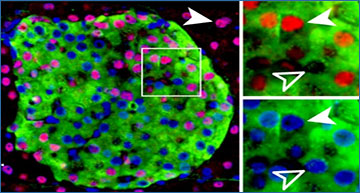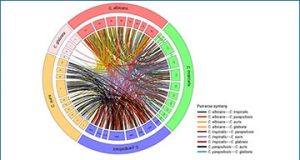from Labroots by Xuan Pham –
One of the biggest surprise findings from the completion of the Human Genome Project was that only 1.5 percent of our genome encodes for all of the protein-coding genes. The rest of our genome has been unfairly described as “junk” DNA.
But amidst this so-called genomic junk, scientists are finding sequences that modulate cellular processes and affect health and disease. Case in point, Germany-based researchers found a non-coding RNA molecule that feeds melanoma growth. The discovery not only helps to reinstate the importance of non-coding genomic sequences, but also impacts the clinical diagnosis and treatment of a most deadly form of cancer.
With a fascination with the non-coding regions of the genome, researchers from Gent University, VIB and KU Leuven honed in on a particular molecule class known as long non-coding RNAs (lncRNAs). These transcripts are greater than 200 nucleotides but do not code for any proteins. In studying lncRNA expression across many different cancer types, the researchers found that a particular long non-coding RNA called SAMMSON was highly expressed in melanoma tissues.
Further analysis showed that SAMMSON expression is associated with about 10 percent of human melanomas that involve the oncogene MITF. In contrast, they did not find SAMMSON in normal melanocytes or any other adult tissues, suggesting this lncRNA is exclusive to melanoma cells. Additional tests confirmed that SAMMSON can be detected in more than 90% of human melanoma samples.
Interestingly, they discovered that blocking SAMMSON expression seemed to inhibit melanoma growth. This was observed in both cell culture studies as well as in mouse models of melanomas. Closer inspection revealed that melanoma cells recruited SAMMSON to the mitochondria, the powerhouse for cancer cells. Thus, by blocking SAMMSON, tumor growth slowed down via mitochondrial activity disruption. The team described this dependency of melanoma cells on SAMMSON as an “addiction.”
Exploiting this “addiction” could lead to valuable diagnostic and treatment therapies next. “SAMMSON addiction is a clear vulnerability that we can combat through targeted therapy, without affecting the normal cells from the host or patient,” said Jean-Christophe Marine, senior study author from KU Leuven. Indeed, researchers expect a potent melanoma cure if they can engineer a drug that can suppress expression of SAMMSON.
As SAMMSON does not exist in normal tissues or in benign melanoma, its presence could be a biomarker for melanoma detection. Furthermore, researchers can use SAMMSON expression as a way to monitor melanoma recurrence post therapy.
Source – Labroots
 lncRNA Blog lncRNA Research and Industry News
lncRNA Blog lncRNA Research and Industry News








